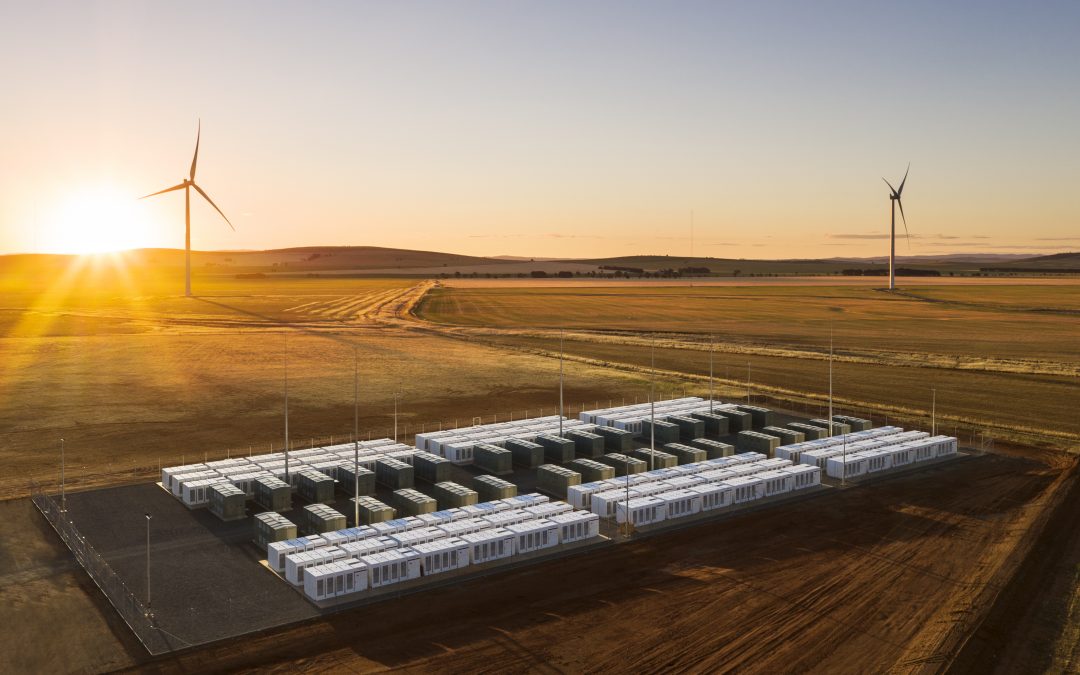From pv magazine 08/2020
When an area becomes saturated with behind-the-meter solar, there can be issues with power backfeeding to local substations, which can damage network infrastructure. In addition, lines can become congested, limiting the amount of power that can be exported, often leading to curtailment.
Energy storage can solve many of these issues by balancing power generation with demand. Network operators and utilities are most commonly interested in using energy storage to manage congestion, mitigate outages, and provide voltage support. Deferring network investment is certainly a potential benefit, but is not a service that a battery provides on an ongoing basis. Providing capacity is not considered a network enhancement, but rather a generation support service, and so is not considered here.
IHS Markit predicts that 5.4 GW of battery energy storage will be installed worldwide for transmission and distribution (T&D) network enhancement between 2020 and 2025. The services that a T&D-enhancing storage system can provide depend on the location of the system, local regulations, and condition of the network.

Storage targets
As early as 2008, utilities in the United States utilized energy storage as a non-wire alternative to traditional network reinforcement. Utilities are increasingly recognizing the benefits of storage to manage congestion, mitigate outages, and shave peaks. Systems are increasingly able to trade energy in wholesale markets and provide frequency regulation, generating additional revenue.
California, New York, and Massachusetts in particular are driving this. These states not only have ambitious renewable energy targets, but also storage specific targets, a significant driver of the T&D enhancement use case. Each state has unique network issues, in addition to common issues of time-shifting and peaking capacity that grow with increasing renewables generation.
Following the growing number of wildfires in the state in recent years, Californian utilities are considering batteries to help alleviate the need for public safety shutoffs, where power is cut off to sections of the grid to reduce the risk of network infrastructure causing wildfires. On the east coast meanwhile, New York City’s population density has created significant congestion issues. Cities and towns in Massachusetts supported by single lines are in need of support to avoid outages and to manage congestion on these lines.
Third-party ownership
The requirement to unbundle vertically integrated energy services (requested by Directive 2009/72/EC and 2009/73/EC of the EU) restricts the ability of both transmission and distribution system operators (TSOs and DSOs) from owning and operating storage systems. Exemptions can be granted when specific criteria are met, but these often come with limitations on what the systems can do and for how long. Instead, network operators are creating new markets for third parties to bid to provide these services.
Historically, storage for T&D enhancement in Europe has been dominated by demonstration projects. Italian TSO Terna, and France’s RTE testing three 10 MW to 12 MW projects in their respective countries in 2014 are just some of the more prominent examples.
In Germany, several TSOs are planning large-scale (100 MW to 250 MW) batteries to provide ‘virtual transmission lines.’ In these projects, multiple ESS will work together to obviate the need to reinforce local lines. These big projects are the exception rather than the rule, however. Instead it is becoming more common for operators to own the system but lease operations to a third party, or create a market for assets to bid their flexibility into. Local flexibility markets in the United Kingdom are one example of this, but the trend is spreading. French DSO Enedis launched its version of local flexibility markets in 2020, and the Netherlands has created markets to capture distributed flexibility.
Australia’s challenge
A result of its dispersed population, harsh environment, aging infrastructure, and the rapid pace of renewables growth, Australia is a growing market for T&D enhancement. Western Power – a network operator in Western Australia – is leading the way in utilizing ESS in fringe-of-the-grid locations in place of traditional network infrastructure. It is installing solar+storage systems behind the meter in place of new lines, and it is pioneering innovative community battery storage systems that provide residents with the opportunity to purchase space in the system to store their solar power (see p.32).
This helps Western Power manage local congestion, increasingly an issue in a region where one in three houses has solar. Front-of-the-meter systems – particularly for aiding congested transmission lines – will likely be a growing trend. Fluence recently proposed two 250 MW/125 MWh ESS instead of a new transmission line between Victoria and New South Wales. In 2018, it also built a 30 MW/30 MWh system in Ballarat to help network operator AusNet manage congestion on its transmission network.
Reducing investment
China had historically been a market leader in storage as a T&D asset. However, reforms excluding ESS from network cost calculations have halted this. Elsewhere, particularly in island regions, ESS are becoming more widely utilized. This is driven by the unique ability of ESS to provide a variety of services simultaneously.
Globally, there is a trend toward network operators outsourcing the operations of the ESS to a third party. In some markets this will be to comply with unbundling requirements, but for vertically integrated utilities, it will be in order to make use of the expertise of a third party. These enhancement services are increasingly only part of the value stack. It is important not to forget that behind-the-meter storage can support the grid by participating in demand management programs and local flexibility markets.
The views and opinions expressed in this article are the author’s own, and do not necessarily reflect those held by pv magazine.
This content is protected by copyright and may not be reused. If you want to cooperate with us and would like to reuse some of our content, please contact: editors@pv-magazine.com.








Why no mention of hydrogen as a method of storing energy?